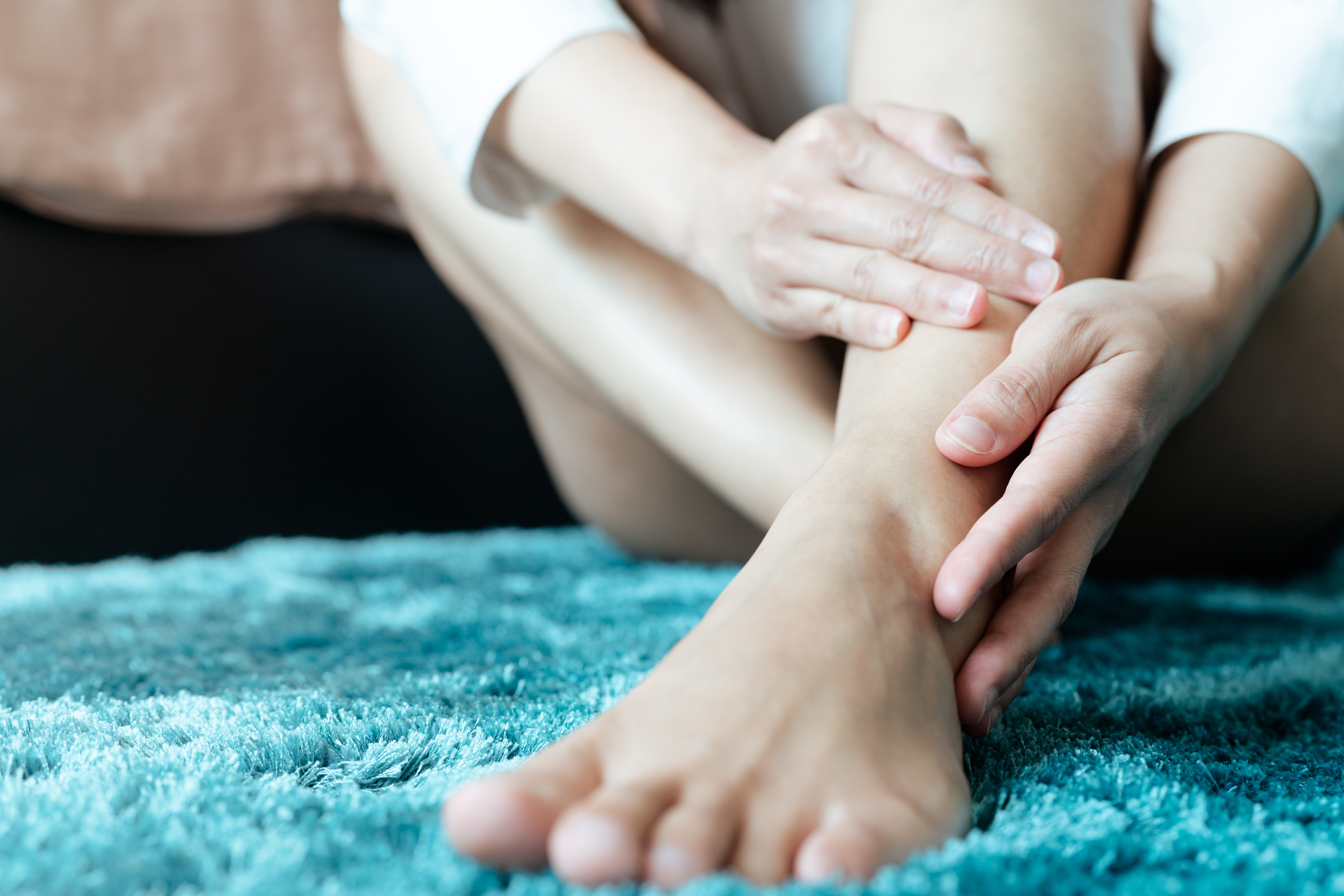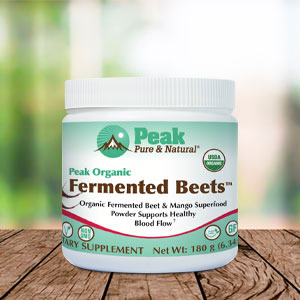Get Easy Health Digest™ in your inbox and don’t miss a thing when you subscribe today. Plus, get the free bonus report, Mother Nature’s Tips, Tricks and Remedies for Cholesterol, Blood Pressure & Blood Sugar as my way of saying welcome to the community!
10 reasons your leg could be hurting

Sometimes if you have leg pain, the cause is obvious, like a pulled muscle or a sprained ankle, or a knee that resulted from an accident or injury.
But there are times when you may not be sure what’s causing your legs to hurt.
Anytime you have pain, be sure to discuss it with your doctor, especially if you’re currently being treated for a condition or taking medication.
Whatever the source, no one wants to suffer through pain, much less worry whether the cause is anything serious or not.
Here are 10 conditions that can contribute to or cause leg pain…
Arthritis
This common condition causes pain, swelling and stiffness in the joints. If your pain is localized to the hips, knees or ankles and makes it tough for you to walk or do everyday activities, you could be suffering from arthritis.
If you’re experiencing these symptoms, talk to your doctor. They’ll likely conduct a physical exam, X-rays and blood tests to determine whether you have arthritis.
While there is no cure for arthritis, getting regular exercise can help keep your hips, knees and ankles limber, and maintaining a healthy weight can take pressure off the joints. Over-the-counter pain relievers like acetaminophen or ibuprofen can help relieve pain and swelling, as can applying heating pads or ice packs to the affected joints.
You can also add certain foods and nutrients to your diet to help manage the inflammation associated with arthritis. Fish oil in particular has been found in multiple studies to help relieve arthritis symptoms, mainly because it’s loaded with inflammation-busting omega-3 fatty acids. If you’re not a big fan of eating fish, you can always take an omega-3 supplement derived from fish or krill. In fact, krill oil contains phospholipids that may enhance the absorption of omega-3s.
Deep vein thrombosis
Deep vein thrombosis (DVT) occurs when a blood clot forms in a vein in your thigh or lower leg. While DVT can occur without symptoms, it often causes pain and swelling in the leg, and the limb may be red and warm to the touch.
DVT can lead to pulmonary embolism, a potentially deadly condition that occurs when the clot breaks off and enters the lungs. That’s why It’s important to call your doctor immediately if you notice any of the above symptoms. They can give you medicine that keeps clots from forming, growing or breaking apart.
If you want to stop DVT before it starts by preventing blood clots, make sure you’re getting regular exercise. Even a daily walk around the block will help keep your blood from pooling and settling in your legs, increasing the likelihood of clot formation.
Certain nutrients like nattokinase have been shown helpful in issues affecting blood flow. Nattokinase is found in fermented soybeans and has been found in multiple studies to help improve circulation and relieve leg pain.
Muscle cramps
Cramps happen when a muscle (usually in the calf) suddenly gets tight, bringing on a sharp pain and a hard lump of muscle. They tend to happen more with age and can also be caused by an imbalance in your body’s electrolytes.
Electrolytes are minerals like sodium, potassium, and calcium that help your muscles work properly. You lose electrolytes through sweat when you exercise or spend time in hot weather, or when you get certain medical treatments like chemotherapy. If you lose too many electrolytes, your legs can cramp up or feel weak or numb.
Leg cramps aren’t usually a sign of an underlying health issue. Still, you should see your doctor if you have them a lot.
While leg cramps do tend to go away on their own, there are things you can do to more quickly ease the discomfort they cause. If you’ve been sweating a lot, try having a sports drink with electrolytes or adding some electrolyte drops to your water. You can also drink some water while eating foods rich in electrolyte minerals, such as bananas, spinach or dried apricots.
You can also try using a foam roller or tennis ball to apply pressure to the cramping muscle. These are gentle yet firm, allowing for compression of tight muscle tissue without fear of bruising or injury.
Peripheral artery disease
Peripheral artery disease (PAD) can keep the legs and arms from getting enough blood. This usually happens when the arteries become narrowed by fatty plaque buildup. PAD may leave your legs feeling weak, numb, crampy or cold, and the limbs may become an unusual color. It can even cause muscle loss and sores or ulcers on your limbs.
PAD can sometimes be managed with changes in lifestyle habits, like quitting smoking, changing your diet and adding regular exercise. If that doesn’t work, your doctor may be able to prescribe medicine to treat PAD or the pain that accompanies it. If the condition is severe, it may require surgery to correct.
Luckily, there are natural ways of helping to manage or avoid PAD. Omega-3 fatty acids have been shown in studies to improve the function of the lining of your blood vessels (endothelium). Omega-3s also can relax smooth muscle cells, allowing the blood vessels to dilate so blood can flow freely. Other potential benefits include a decrease in artery wall stiffening, a delay in the development of plaques in the vessels and a reduction in inflammation and clot formation. As mentioned above, omega-3s can be obtained by eating fish or taking fish oil or krill oil supplements.
Low dietary magnesium intake is also associated with PAD. You can read up on how to identify the signs of a deficiency and correct it here.
Peripheral neuropathy
Peripheral neuropathy occurs when there’s damage to the nerves in your body that send messages to and from your brain. It’s most commonly caused by diabetes, though it can also be the result of other health conditions, medicines, injuries or infections.
When peripheral neuropathy affects the nerves in your legs, it can cause them to feel prickly, tingly, numb or weak.
Usually, your doctor will treat peripheral neuropathy by treating the condition that’s causing it, along with pain medication if needed. However there are a few natural ways to manage the pain caused by peripheral neuropathy.
First, try adding a magnesium supplement. Magnesium decreases nerve pain by calming the neurotransmitter NMDA. Nerve pain is often a result of magnesium deficiency.
There are also plant-derived substances that can reduce spasms and inflammation, both of which can help prevent and reduce nerve pain. These include devil’s claw, burdock, turmeric, German chamomile and zanthoxylums. Vitamin D3 is also great for reducing inflammation.
You should also make sure you’re getting regular exercise, since it boosts levels of a protein that reduces inflammation and, thus, nerve pain.
Sciatica
The leg pain caused by sciatica comes from a pinched or inflamed nerve in your lower spine. This pain can range from a bad cramp to a strong shooting pain that makes it difficult to sit or stand. Some common causes of sciatica include a herniated disk, slipped vertebra, butt muscle spasms or spinal stenosis.
Typical doctor-recommended treatments for sciatica include physical therapy and over-the-counter pain medications, though more serious cases may require surgery. However, if you have mild sciatica, there are ways for you to manage it on your own through stretching and yoga, as well as light exercise.
Another way to relieve sciatic pain naturally is by applying ice or heat to the area for 20 minutes every 2 hours. You can even alternate between the two. Also, to reduce the inflammation around your sciatic nerve, you can try supplementing turmeric, ginger and Boswellia, all of which have anti-inflammatory properties.
Spinal stenosis
Spinal stenosis occurs when the space inside the spinal column narrows, putting pressure on the nerves in the area. This can cause pain, tingling, numbness or weakness in your legs, as well as balance problems.
It’s important to see your doctor right away if you have any of these symptoms. They’ll likely recommend pain relievers and physical therapy to start. However, if these don’t work, surgery may be required.
Unfortunately, there isn’t a lot that can be done to reverse spinal stenosis once it occurs. But you can help prevent it from developing by keeping your spine healthy and flexible through exercise and flexibility practices like yoga.
Stress fractures
If you have pain that feels like shin splints but doesn’t get any better, you could have a stress fracture in your shinbone. Stress fractures occur when the muscles around the bone are overused and stop cushioning the impact of movement the way they should.
If your doctor diagnoses you with a stress fracture, they’ll likely tell you to rest the body part in question. It takes 6 to 8 weeks for a stress fracture to heal, so make sure it’s healed completely before you start exercising again so you don’t worsen the injury.
Some studies show that reducing oxidative stress can help protect your bones from fracturing. To do that, you’ll want to include plenty of antioxidant-rich fruits and vegetables in your diet, and ones that contain the “anti-fracture” vitamin.
Tendinitis
Tendinitis is when the flexible tendons that connect muscles to bones become inflamed. It’s a painful condition that can affect your hip, knee or ankle and is often caused by wear and tear on the joints.
See your doctor if you’re experiencing pain around a certain joint. If they diagnose tendinitis, they’ll likely recommend R.I.C.E. (rest, ice, compression, elevation) to treat it, as well as over-the-counter anti-inflammatory medications like ibuprofen or naproxen.
Some plant-based substances can help reduce the inflammation associated with tendonitis. These include such as turmeric and Boswellia, the same remedies recommended for sciatica. Switching to a keto diet may also offer some relief if the tendinitis is chronic.
Varicose veins
Varicose veins can make your legs feel heavy and burn, throb or cramp, as well as raise your risk of blood clots. They tend to bulge and appear twisted, blue or dark purple. They look that way because the veins have to work extra hard to transport blood back to the heart.
Varicose veins tend to occur with age, or if you’re overweight, pregnant or stand or sit for long stretches. Thus, one of the best ways to combat them is to lose weight and exercise. Wearing compression stockings helps as well since they promote healthy circulation in your legs.
Interestingly, eating more fiber to keep you regular may help improve varicose veins as well. Researchers believe the straining that accompanies constipation can put added stress on your veins.
Editor’s note: There are perfectly safe and natural ways to decrease your risk of blood clots including the 25-cent vitamin, the nutrient that acts as a natural blood thinner and the powerful herb that helps clear plaque. To discover these and other secrets of long-lived hearts, click here for Hushed Up Natural Heart Cures and Common Misconceptions of Popular Heart Treatments!
Sources:
What’s Causing Your Leg Pain? — WebMD
FAQs about Arthritis — Centers for Disease Control and Prevention
Natural Remedies for Tendonitis — Verywell Health
Healthy Foods High in Electrolytes — Nourish by WebMD















